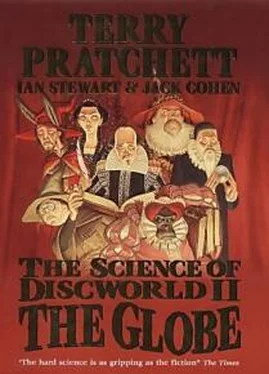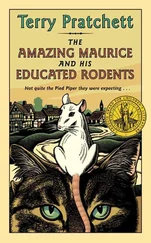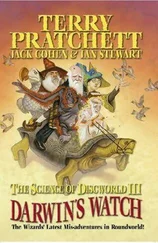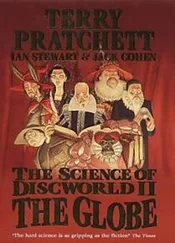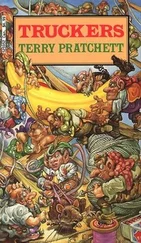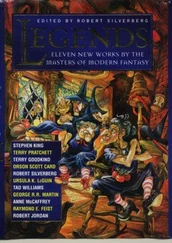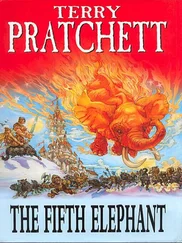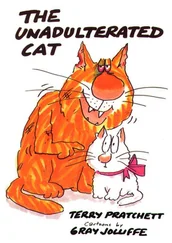Terry Pratchett - The Science of Discworld II - The Globe
Здесь есть возможность читать онлайн «Terry Pratchett - The Science of Discworld II - The Globe» весь текст электронной книги совершенно бесплатно (целиком полную версию без сокращений). В некоторых случаях можно слушать аудио, скачать через торрент в формате fb2 и присутствует краткое содержание. Жанр: Фантастика и фэнтези, на английском языке. Описание произведения, (предисловие) а так же отзывы посетителей доступны на портале библиотеки ЛибКат.
- Название:The Science of Discworld II - The Globe
- Автор:
- Жанр:
- Год:неизвестен
- ISBN:нет данных
- Рейтинг книги:5 / 5. Голосов: 1
-
Избранное:Добавить в избранное
- Отзывы:
-
Ваша оценка:
- 100
- 1
- 2
- 3
- 4
- 5
The Science of Discworld II - The Globe: краткое содержание, описание и аннотация
Предлагаем к чтению аннотацию, описание, краткое содержание или предисловие (зависит от того, что написал сам автор книги «The Science of Discworld II - The Globe»). Если вы не нашли необходимую информацию о книге — напишите в комментариях, мы постараемся отыскать её.
The Science of Discworld II - The Globe — читать онлайн бесплатно полную книгу (весь текст) целиком
Ниже представлен текст книги, разбитый по страницам. Система сохранения места последней прочитанной страницы, позволяет с удобством читать онлайн бесплатно книгу «The Science of Discworld II - The Globe», без необходимости каждый раз заново искать на чём Вы остановились. Поставьте закладку, и сможете в любой момент перейти на страницу, на которой закончили чтение.
Интервал:
Закладка:
43,000,000,000
. This number is a lot bigger than the 70-digit number we got for the car-parking problem. It's a lot bigger than L-space for normal-size books, too. In fact, it has about
1,800,000,000 digits. If you wrote it out with 3,000 digits per page, you'd need a 600,000-page book to hold it.
The image of DNA-space is very useful for geneticists who are considering possible changes to DNA sequences, such as 'point mutations' where one code letter is changed, say as the result of a copying error. Or an incoming high-energy cosmic ray. Viruses, in particular, mutate so rapidly that it makes little sense to talk of a viral species as a fixed thing. Instead, biologists talk of quasi-species, and visualise these as clusters of related sequences in DNA-space. The clusters slosh around as time passes, but they stay together as one cluster, which allows the virus to retain its identity.
In the whole of human history, the total number of people has been no more than ten billion, a mere 11-digit number. This is an incredibly tiny fraction of all those possibilities. So actual human beings have explored the tiniest portion of DNA-space, just as actual books have explored the tiniest portion of L-space. Of course, the interesting questions are not as straightforward as that. Most sequences of letters do not make up a sensible book; most DNA
sequences do not correspond to a viable organism, let alone a human being.
And now we come to the crunch for phase spaces. In physics, it is reasonable to assume that the sensible phase space can be 'pre-stated' before tackling questions about the corresponding system. We can imagine rearranging the bodies of the solar system into any configuration in that imaginary phase space. We lack the engineering capacity to do that, but we have no difficulty imagining it done, and we see no physical reason to remove any particular configuration from consideration.
When it comes to DNA-space, however, the important questions are not about the whole of that vast space of all possible sequences. Nearly all of those sequences correspond to no organism whatsoever, not even a dead one. What we really need to consider is 'viable-DNA-space', the space of all DNA sequences that could be realised within some viable organism. This is some immensely complicated but very thin part of DNA-space, and we don't know what it is. We have no idea how to look at a hypothetical DNA sequence and decide whether it can occur in a viable organism.
The same problem arises in connection with L-space, but there's a twist. A literate human can look at a sequence of letters and spaces and decide whether it constitutes a story; they know how to 'read' the code and work out its meaning, if it's in a language they understand. They can even make a stab at deciding whether it's a good story or a bad one. However, we do not know how to transfer this ability to a computer. The rules that our minds use, to decide whether what we're reading is a story, are implicit in the networks of nerve cells in our brains. Nobody has yet been able to make those rules explicit. We don't know how to characterise the 'readable books' subset of L-space.
For DNA, the problem is compounded because there isn't some kind of fixed rule that 'translates'
a DNA code into an organism. Biologists used to think there would be, and had high hopes of learning the 'language' involved. Then the DNA for a genuine (potential) organism would be a code sequence that told a coherent story of biological development, and all other DNA sequences would be gibberish. In effect, the biologists expected to be able to look at the DNA sequence of a tiger and see the bit that specified the stripes, the bit that specified the claws, and so on. This was a bit optimistic. The current state of the art is that we can see the bit of DNA that specifies the protein from which claws are made, or the bits that make the orange, black and white pigments on the fur that show up as stripes, but that's about as far as our understanding of DNA narrative goes. It is now becoming clear that many non-genetic factors go into the growth of an organism, too, so even in principle there may not be a 'language' that translates DNA into living creatures.
For example, tiger DNA turns into a baby tiger only in the presence of an egg, supplied by a mother tiger. The same DNA in the presence of a mongoose egg, would not make a tiger at all.
Now, it could be that this is just a technical problem: that for each DNA code there is a unique kind of mother-organism that turns it into a living creature, so that the form of that creature is still implicit in the code. But theoretically, at least, the same DNA code could make two totally different organisms. We give an example in The Collapse of Chaos where the developing organism first 'looks' to see what kind of mother it is in, and then develops in different ways depending on what it sees.
Complexity guru Stuart Kauffman has taken this difficulty a stage further. He points out that while in physics we can expect to pre-stage the phase space of a system, the same is never true in biology. Biological systems are more creative than physical ones: the organisation of matter within living creatures is of a different qualitative nature from the organisation we find in inorganic matter. In particular, organisms can evolve, and when they do that they often become more complicated. The fish-like ancestor of humans was less complicate than we are today, for example. (We've not specified a measure of complexity here, but that statement will be reasonable for most sensible measures of complexity, so let's not worry about definitions.
Evolution does not necessarily increase complexity, but it's at its mo puzzling when it does.)
Kauffman contrasts two systems. One is the traditional thermodynamic model in physics, of N
gas molecules (modelled as hard spheres) bouncing around inside their 6N-dimensional phase space. Here we know the phase space in advance, we can specify the dynamic precisely, and we can deduce general laws. Among them is the Second Law of Thermodynamics, which states that with overwhelming probability the system will become more disordered as time passes, and the molecules will distribute themselves uniformly throughout their container.
The second system is the 'biosphere', an evolving ecology. Here, it is not at all clear which phase space to use. Potential choices are either much too big, or much too limited. Suppose for a moment that the old biologists' dream of a DNA language for organisms was true. Then we might hope to employ DNA-space as our phase space.
However, as we've just seen, only a tiny, intricate subset of that space would really be of interest
-but we can't work out which subset. When you add to that the probable non-existence of any such language, the whole approach falls apart. On the other hand, if the phase space is too small, entirely reasonable changes might take the organisms outside it altogether. For example, tiger- space might be defined in terms of the number of stripes on the big cat's body. But if one day a big cat evolves that has spots instead of stripes, there's no place for it in the tiger phase space.
Sure, it's not a tiger ... but its mother was. We can't sensibly exclude this kind of innovation if we want to understand real biology.
As organisms evolve, they change. Sometimes evolution can be seen as the opening-up of a region of phase space that was sitting there waiting, but was not occupied by organisms. If the colours and patterns on an insect change a bit, all that we're seeing is the exploration of new regions of a fairly well-defined 'insect-space'. But when an entirely new trick, wings, appears, even the phase space seems to have changed.
It is very difficult to capture the phenomenon of innovation in a mathematical model.
Читать дальшеИнтервал:
Закладка:
Похожие книги на «The Science of Discworld II - The Globe»
Представляем Вашему вниманию похожие книги на «The Science of Discworld II - The Globe» списком для выбора. Мы отобрали схожую по названию и смыслу литературу в надежде предоставить читателям больше вариантов отыскать новые, интересные, ещё непрочитанные произведения.
Обсуждение, отзывы о книге «The Science of Discworld II - The Globe» и просто собственные мнения читателей. Оставьте ваши комментарии, напишите, что Вы думаете о произведении, его смысле или главных героях. Укажите что конкретно понравилось, а что нет, и почему Вы так считаете.
